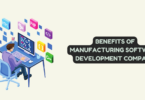
Strategies for Small Businesses Seeking to Streamline Workflow
In the competitive world of small businesses, efficiency is not simply a goal; it’s a necessity. Streamlining workflow is fundamental to staying ahead, ensuring productivity, and fostering growth. Small businesses, often operating with limited resources and tight budgets, face unique challenges in managing their operations smoothly. The key to overcoming these challenges lies in the strategic optimization of processes and the intelligent use of technology.
By adopting specific strategies, small businesses can enhance their efficiency, reduce time spent on non-core activities, and focus more on growth and development. This article explores six practical strategies that small businesses can employ to streamline their workflow, thereby boosting their overall performance.
Adopting Automation for Repetitive Tasks
Automation is a game-changer for small businesses looking to streamline their workflow. By automating repetitive and time-consuming tasks, businesses can save hours of manual work each week, which includes a range of activities, from invoicing and billing to scheduling and email responses. Automating these tasks reduces the likelihood of human error and frees up staff to focus on more critical, revenue-generating activities.
For instance, using automated invoicing systems can ensure that bills are sent out promptly and accurately, improving cash flow. Automated scheduling tools can optimize appointments and meetings, ensuring efficient use of time. Similarly, setting up automated email responses for common queries can enhance customer service without the need for constant manual input.
With mundane tasks taken care of, employees can dedicate their efforts to more strategic tasks that require human intelligence and creativity.
Implementing Efficient Tax Handling Tools
One of the most daunting tasks for any small business is managing taxes efficiently. Mismanagement or errors in tax handling can lead to significant financial and legal repercussions. That’s where services like the EIN filing service come into play. These services simplify the process of obtaining an Employer Identification Number (EIN), which is essential for business operations like opening a bank account, applying for business licenses, and filing tax returns.
Using an EIN filing service can significantly streamline the tax preparation process for small businesses. It eliminates the need to navigate complex tax codes and paperwork, reducing the risk of errors and saving valuable time. By ensuring that the business’s tax-related documentation is accurate and in order, these services help small businesses stay compliant with federal regulations. It not only aids in smoother financial operations but also provides peace of mind, allowing business owners to focus on other critical aspects of their business.
Furthermore, these services often come with additional support, such as reminders of tax deadlines and assistance with filing returns. This comprehensive approach to tax handling ensures that small businesses can manage their finances more effectively, making the entire process less burdensome and more streamlined.
Utilizing Project Management Software
Effective project management is critical for small businesses to ensure that tasks are completed on time and resources are utilized optimally. Project management software is an invaluable tool in this regard. It helps organize, track, and manage various business activities, thereby enhancing workflow efficiency.
These software solutions offer features like task assignment, deadline tracking, resource allocation, and progress monitoring. They enable team members to see at a glance what needs to be done, who is responsible for each task, and when it is due. This clear visibility into projects helps prevent bottlenecks and ensures that everyone is aligned with the business objectives.
Moreover, many project management tools come with collaboration features, allowing team members to communicate and work together more effectively. Whether it’s sharing documents, updating task statuses, or discussing project details, these tools facilitate seamless collaboration, even if team members are working remotely.
Regular Team Meetings and Communication Channels
Regular team meetings are vital for small businesses aiming to streamline their workflow. These meetings offer a platform for discussing ongoing projects, addressing challenges, and aligning team objectives. Effective meetings, when conducted properly, can significantly enhance team coordination and productivity.
Firstly, it’s important to have a clear agenda for each meeting. The agenda ensures that the discussion remains focused and time-efficient. Regular meetings allow team members to stay updated on various aspects of the business, fostering a sense of unity and purpose. They also provide an opportunity for employees to voice their ideas and concerns, promoting a collaborative work environment.
In addition to face-to-face meetings, leveraging various communication channels is crucial. Tools like instant messaging apps and video conferencing software can facilitate quick and effective communication, especially for teams that include remote members. These channels ensure that information is shared in real-time, enabling swift decision-making and problem-solving.
For small businesses, where agility is a key advantage, regular team meetings and robust communication channels can make a substantial difference.
Training Employees in Time Management
Effective time management is a skill that can significantly contribute to a streamlined workflow. For small businesses, where resources are often limited, it’s crucial that every minute counts. Training employees in time management techniques can lead to more efficient work processes and higher productivity.
Time management training can include teaching employees how to prioritize tasks, set realistic goals, and avoid distractions. Techniques like the Eisenhower Box, which helps in categorizing tasks based on their urgency and importance, can be very useful. Additionally, encouraging employees to take regular short breaks can prevent burnout and maintain high levels of concentration.
Moreover, time management isn’t simply about managing work hours; it’s about optimizing them. For instance, scheduling the most challenging tasks during one’s peak productivity hours can lead to better outcomes. By helping employees understand and manage their time effectively, small businesses can ensure that tasks are completed within deadlines and to a high standard.
Regularly Reviewing and Updating Processes
For small businesses to maintain an edge, it’s essential to continuously review and update their processes. The business landscape is ever-changing, and what works today may not be effective tomorrow. Regularly assessing workflows, identifying bottlenecks, and making necessary adjustments can lead to significant improvements in efficiency.
This process involves gathering feedback from employees, analyzing performance metrics, and staying abreast of industry trends. It’s about understanding where time and resources are being spent and determining if they align with the business’s objectives. This continual review can reveal opportunities for further automation, the need for additional training, or areas where resources can be better allocated.
Updating processes also means being open to change and innovation, which could involve adopting new technologies, restructuring teams, or revising strategies to improve performance. For small businesses, this agility can be a major competitive advantage, allowing them to adapt quickly to new opportunities or challenges.
Conclusion
Streamlining workflow is crucial for small businesses seeking to thrive in a competitive market. By implementing efficient tax handling tools, adopting automation, utilizing project management software, holding regular team meetings, training employees in time management, and regularly reviewing processes, small businesses can enhance their productivity and operational efficiency. These strategies not only optimize workflow but also contribute to a more dynamic, responsive, and successful business environment.






